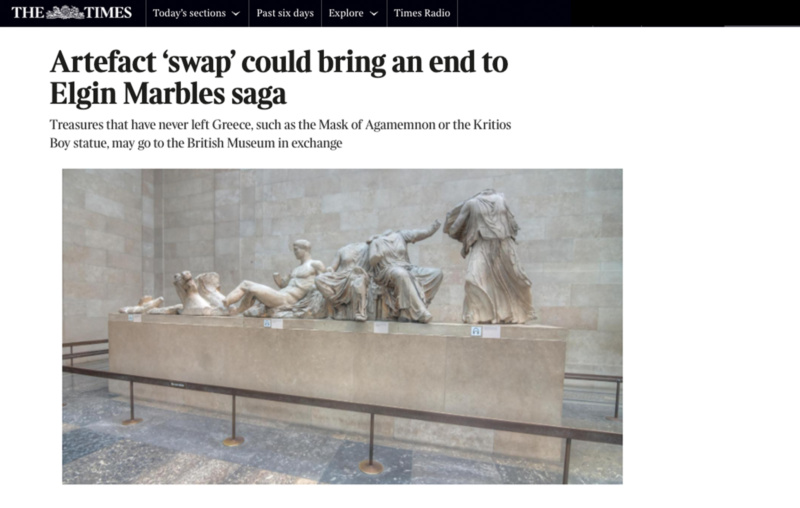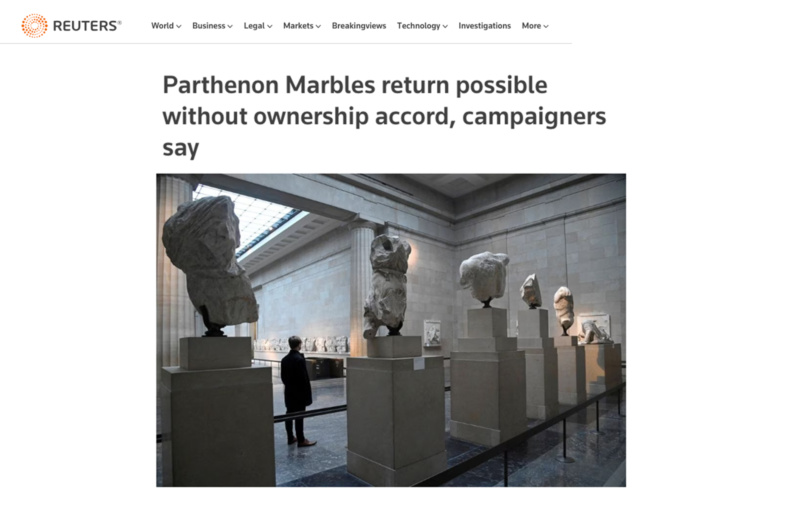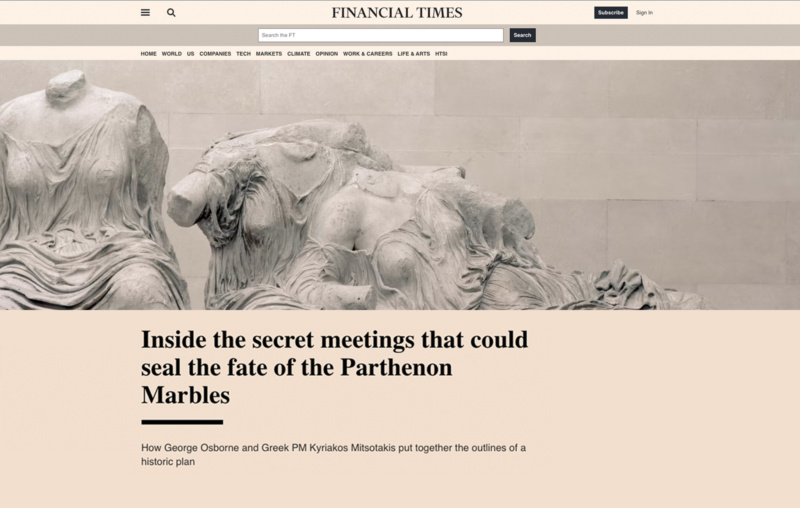
Parthenon: A Win-Win solution

Overview
The Parthenon Project aims to reunify the Parthenon Sculptures (also known as the Elgin Marbles) on display in the British Museum with the Sculptures exhibited at the Acropolis museum, in their home city of Athens, where they were created by Phidias – one of the greatest sculptors of Classical Antiquity.
Our approach is to be forward-looking and to realise a win-win solution to their reunification that will be mutually beneficial to both Greece and Britain.
The case for a mutually beneficial cultural partnership has never been stronger amongst UK stakeholders. As the Chair of the British Museum George Osborne himself has said, there is a “deal to be done”.
Our win-win vision
We are proposing an ambitious “cultural partnership agreement” that would see the Parthenon Sculptures currently housed in the British Museum reunified in Greece.
Under our landmark cultural partnership agreement:
The British Museum would continue to have a world-leading collection of ancient Greek artefacts
The British Museum is a “museum of the world” and Ancient Greek treasures have an important role to play there. Our cultural partnership would see Greek masterpieces sent to the British Museum for the curation of world-class Visiting Exhibitions, with scope for income generation.
This could include blockbuster artefacts that have never been seen outside Greece before such as the 3,600-year-old Mask of Agamemnon, the Kritios Boy and artefacts from the Acropolis Museum which date back to the period before the Parthenon was built.
The display of such artefacts would attract footfall to the British Museum and would offer visitors a window into a fascinating and influential period in global history.
The Parthenon Sculptures in the British Museum would be reunified as a complete artistic work in the Acropolis Museum
The Parthenon Sculptures are a single piece of art currently exhibited in a fragmented state.
Our deal would see the reunification of the Parthenon Sculptures, currently housed in the British Museum, back in Athens – the place where they were born.
They would be displayed in the Acropolis Museum as a complete artistic work consistent with its creators’ vision.
A non-profit Foundation would be established between the UK and Greece
To support the cultural partnership, a joint Greek-British Foundation would be established to fund a long-term programme of scholarships and wider educational and cultural activities to benefit young people in the UK and Greece.
The Foundation would be led by an equal number of appointees from Greece and the UK and would represent the interests of both nations, prioritising the benefits to young people.
It would engage supporters and donors from around the world, to fund a programme of scholarships, student exchanges and educational programmes, as well as grants for museums in both countries. These could be used for the repurposing and refurbishing of the British Museum’s Duveen Gallery as a new Hellenic Gallery, and for the renovation of Greece’s National Archaeological Museum.
The aim is to raise £20m to £30m in seed funding, and develop subsequent financing streams, for the Foundation’s activities.
Agreeing to disagree – the cultural partnership agreement would be deliverable under the British Museum Act 1963
The proposed cultural partnership agreement would be deliverable within the current legal framework, including under the British Museum Act 1963. With debates about ownership having been a blocker to resolution in the past, the Parthenon Project proposes that both sides ‘agree to disagree’ and acknowledge that they do not currently share an agreed position on the ownership of the Parthenon Sculptures.
The agreement would not be a disposal of the Parthenon Sculptures but a long-term, win-win partnership. At its heart, the cultural partnership and the foundation creates benefit and opportunity for UK and Greece – and particularly for our young people.
Background
A collection of the Parthenon Sculptures was brought to the UK between 1801 and 1812 by Lord Elgin and are now housed in the British Museum in London. Since the early 1980s, when the first formal request was made for the permanent return to Greece of the sculptures, there has been a public debate about where they rightly belong.
How Can You Get Involved?
If you would like to join the efforts to reunite the Parthenon Sculptures in Greece through a cultural partnership and receive emails with campaign updates, please subscribe below.
For press enquiries, please contact info@parthenonproject.co.
The Parthenon Project is led and financed by members of the Lefas family.






